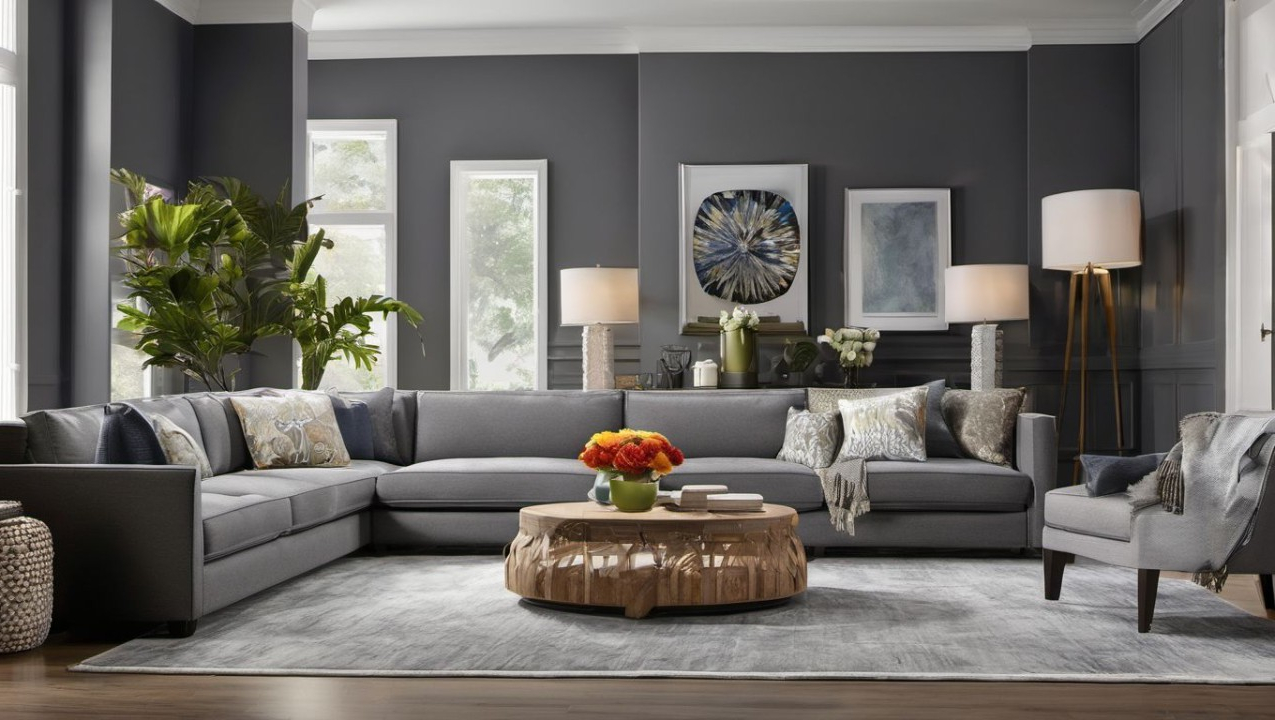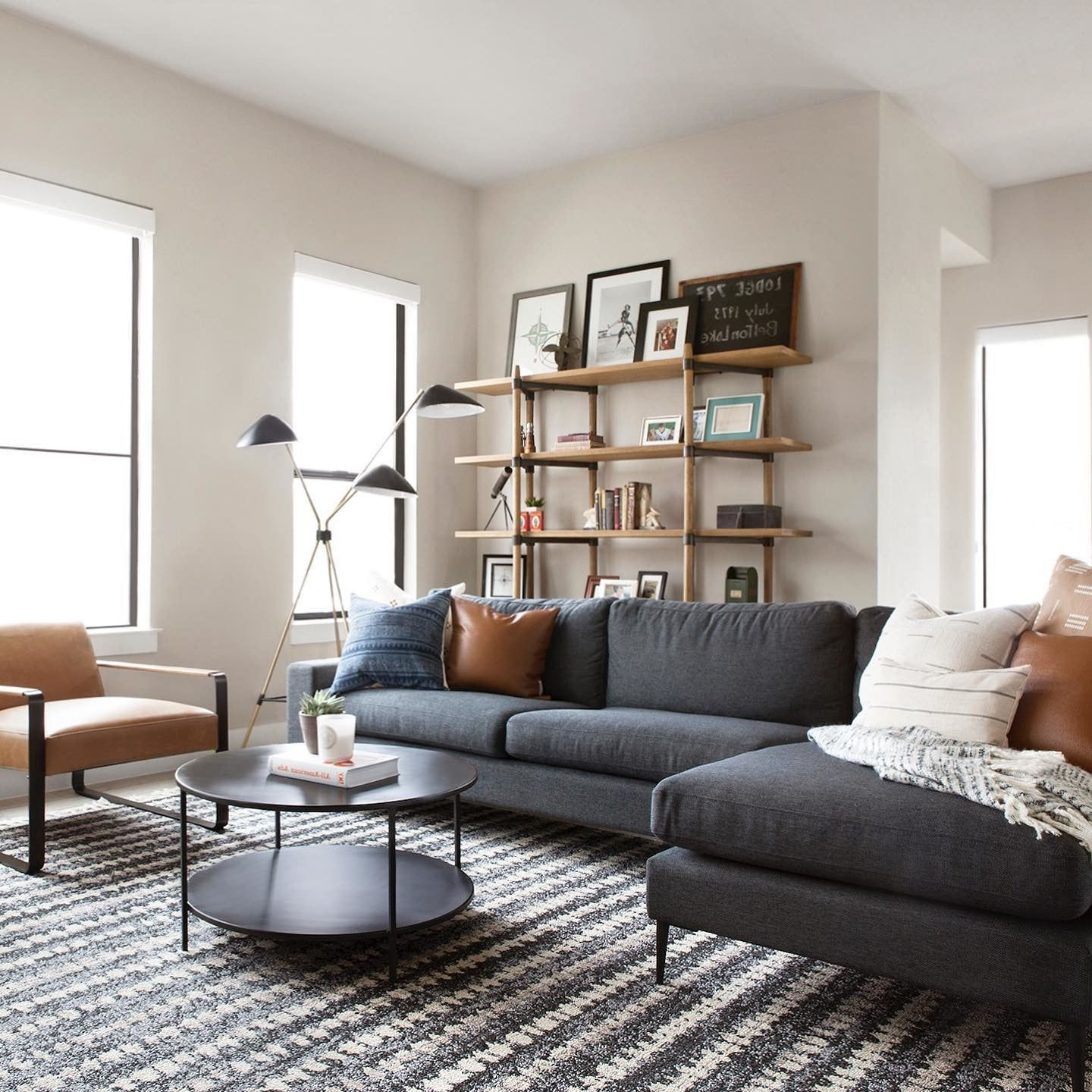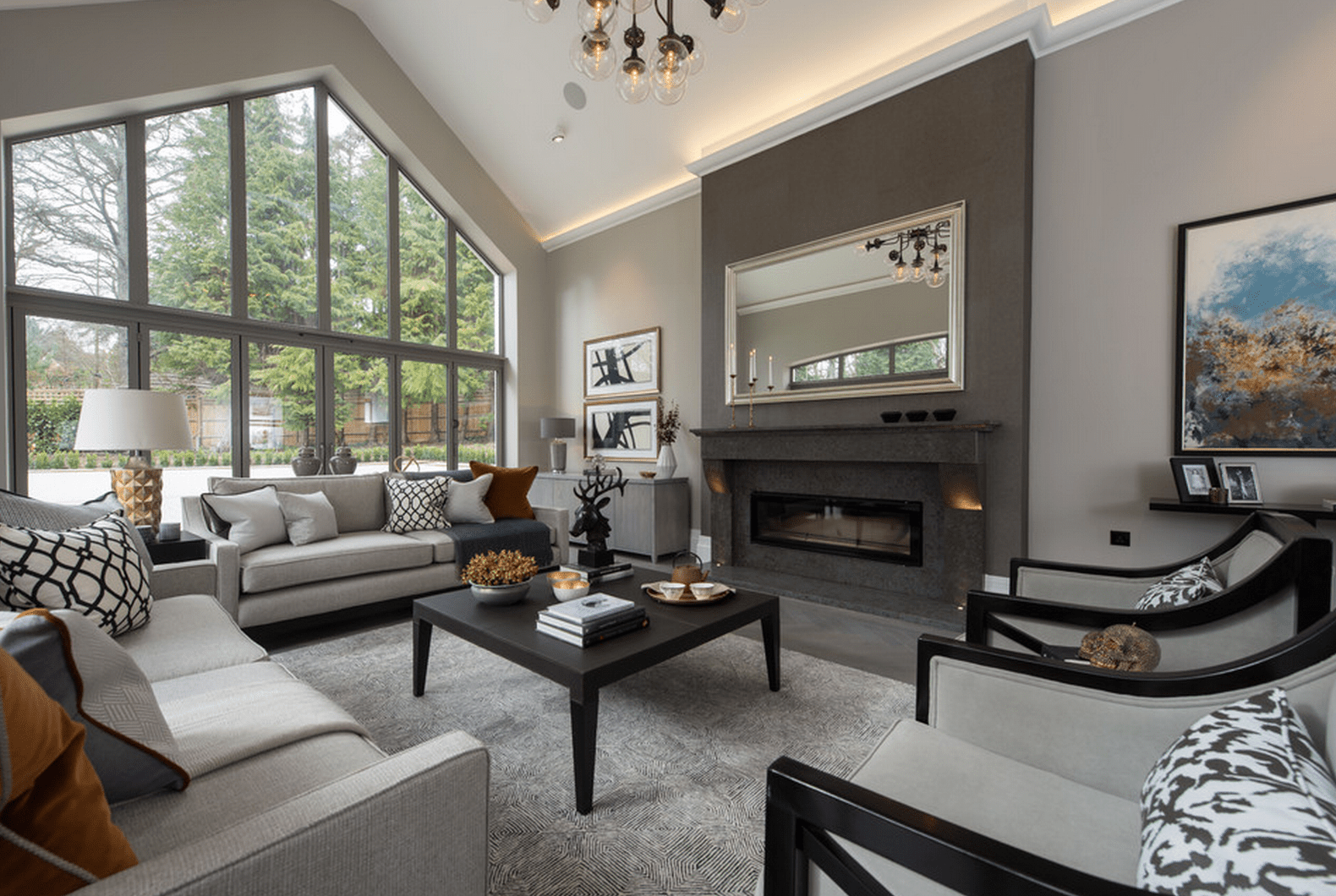There’s something magical about gray furniture that makes it feel both sophisticated and incredibly inviting. Whether you’re starting fresh or updating your existing space, gray pieces can create that perfect balance between contemporary style and homey comfort. It’s not just about the color itself – it’s about how you layer textures, lighting, and personal touches to make every corner feel like a retreat.
Gray furniture has become the go-to choice for modern homeowners who want their living spaces to feel both stylish and comfortable. It’s versatile enough to work in any design aesthetic while still providing that clean, contemporary edge that many people crave. But here’s the thing – gray alone won’t make your room cozy. You have to think about how it interacts with everything else in the space. What makes a gray sofa feel like a hug? How do you ensure those sleek coffee tables don’t make your room feel cold? Let’s explore how to get it right.
Why Gray Works So Well in Modern Living Rooms
Gray furniture isn’t just another color option – it’s a design powerhouse. It’s neutral enough to blend seamlessly with almost any decor, yet bold enough to make a statement when used thoughtfully. The beauty of gray lies in its ability to reflect light differently than bolder colors, creating an airy, spacious feeling even in smaller rooms. When you choose gray pieces, you’re essentially choosing flexibility. You can pair them with warm wood tones, soft pastels, or dramatic accent colors without worrying about clashing. Plus, gray furniture tends to age gracefully. It won’t look dated in five years like some trendy pieces might. It’s like having a timeless friend in your home.
Gray also has psychological benefits. Studies show that neutral tones can reduce stress levels and create a sense of calm. In our busy lives, we all crave that moment of peace when we walk into a room. Gray furniture helps set the stage for that feeling of serenity.
Choosing the Right Shades of Gray
Not all grays are created equal. There’s a whole spectrum of gray tones that can completely change the mood of your room. Cool grays tend to feel more modern and crisp, while warm grays add a touch of sophistication and comfort. Here’s what to consider:
• Warm gray: Think of it as the golden retriever of grays – friendly, welcoming, and perfect for creating a cozy atmosphere. These shades often contain hints of beige or brown.
• Cool gray: This is the minimalist’s best friend. It’s clean, sharp, and perfect for those who love a more structured look.
• Charcoal gray: Bold and dramatic, great for making a statement. Perfect for larger spaces where you want to create focal points.
• Light gray: Makes small rooms feel bigger and brighter. Often paired with white accents for a fresh, airy vibe.
Consider the natural light in your space. A light gray sofa might look stark in a dimly lit room, while a dark gray piece could overwhelm a bright space. Test different samples in your actual environment before committing.
Mixing Textures for Maximum Comfort
One of the secrets to cozy gray furniture is layering different textures. A smooth, sleek gray sofa feels different than one with a soft, plush fabric. The key is balancing hard and soft elements. Here’s how to approach it:
• Fabric choices: Consider velvet for luxury, linen for casual comfort, or wool for warmth. Each texture brings something unique to the table.
• Throw pillows: These are your easiest way to add variety. Mix textures like silk, cotton, and faux fur in complementary colors.
• Rugs: A chunky knit rug or a soft shag can instantly make a room feel cozier. Even a simple gray area rug can provide visual interest.
• Curtains: Sheer fabrics let in light while adding movement, while heavier materials create privacy and depth.
The goal is to avoid uniformity. Your eye should travel across the room and find multiple tactile experiences. That’s what makes a space feel lived-in and loved rather than sterile and showroom-like.
Lighting That Enhances Gray Furniture
Lighting plays a crucial role in how gray furniture appears and feels. Natural light can make gray seem cool and clinical, while warm artificial lighting can bring out the best in those neutral tones. Here’s how to get it right:
• Layer your lighting: Combine ambient, task, and accent lighting to create depth and dimension.
• Use warm bulbs: 2700K to 3000K bulbs create that cozy glow that makes gray furniture look inviting.
• Add table lamps: They’re perfect for creating intimate spots where you can curl up with a book or chat with friends.
• Consider dimmers: They give you control over the mood throughout the day. A bright, functional setting during the day versus a soft, warm ambiance in the evening.
Think of lighting as the invisible designer in your room. It can make a stark gray sectional feel like a comfortable armchair or turn a sleek gray coffee table into a gathering place.
Accessorizing Without Overdoing It
This is where many people struggle – they think more accessories = better. Actually, less is often more when working with gray furniture. The key is choosing pieces that complement rather than compete with your gray base. Here are some smart approaches:
• Color palette: Stick to 3-4 main colors maximum. If you’re using gray furniture, consider adding warm neutrals like cream, beige, or soft browns.
• Natural elements: Plants, wood, and stone add life and organic warmth to any gray space. A single fiddle leaf fig or a few succulents can make all the difference.
• Artwork: Choose pieces that either echo the undertones in your gray furniture or provide contrast with vibrant colors.
• Books and magazines: They’re practical and add visual texture. Stack them on shelves or scatter them on coffee tables.
Remember, gray is a background color, not a foreground one. It should enhance your other belongings rather than fight for attention.
Practical Tips for Maintaining Gray Furniture
Gray furniture requires a bit more care than lighter-colored pieces because stains and dirt show up more easily. But with the right approach, it can last for years. Here’s what you need to know:
• Regular cleaning: Vacuum upholstery weekly and spot-clean spills immediately. Use appropriate cleaners for your specific fabric type.
• Sun protection: UV rays can fade gray colors over time. Use curtains or blinds to protect your furniture from direct sunlight.
• Rotate cushions: This helps distribute wear evenly and keeps your pieces looking fresh.
• Professional cleaning: Every 12-18 months, have your gray furniture professionally cleaned to maintain its appearance.
Don’t forget about protecting your gray furniture from pets and children. Use throw blankets or slipcovers if needed, and keep a stain remover handy for those inevitable accidents.
Real-Life Examples of Successful Gray Living Rooms
Seeing how others have tackled gray furniture can really inspire your own project. Here are some examples that demonstrate different approaches:
• Modern minimalist: A sleek gray sectional paired with a glass coffee table and minimal accessories creates a clean, uncluttered look.
• Cozy family room: A warm gray sofa with layered throw pillows, a chunky knit rug, and soft lighting creates an inviting space for family gatherings.
• Urban apartment: Dark gray furniture with metallic accents and geometric art provides a sophisticated city living feel.
• Country cottage: Light gray furniture with vintage accessories and natural textures brings together old and new elements beautifully.
Each example shows how gray furniture adapts to different lifestyles and preferences. The common thread? Thoughtful attention to detail and intentional design choices.
Common Mistakes to Avoid
Even experienced designers sometimes fall into these traps when working with gray furniture. Here’s how to sidestep them:
• Using too much gray: Having three different gray pieces can make a room feel monotonous. Stick to one main gray piece and use other colors for contrast.
• Ignoring the room’s personality: Gray furniture works best when it fits with your lifestyle. A high-end gray sofa might not suit a bohemian vibe.
• Overlooking the importance of contrast: Without some form of contrast, gray can feel flat and boring. Add texture, pattern, or color to keep things interesting.
• Neglecting practical considerations: Think about how the furniture will be used. Will it get daily wear? Choose durable materials that can handle the traffic.
These mistakes aren’t fatal, but they can make your gray furniture feel less successful than it could be.
Making It Work for Your Space
Every room is different, and gray furniture needs to be adapted to fit your specific situation. Here’s how to customize it for your space:
• Small rooms: Opt for light gray furniture and avoid dark shades that can make the space feel smaller. Add mirrors to reflect light.
• Large rooms: Darker grays and bold accessories can help define spaces and prevent the room from feeling empty.
• Rooms with little natural light: Choose warm gray tones and incorporate lots of artificial lighting to create a cozy atmosphere.
• High-traffic areas: Select easy-care fabrics and consider protective measures like slipcovers or throw blankets.
The most important thing is to start with what feels right for you personally. Gray furniture can be a blank canvas for your creativity, not a constraint on it.
Creating cozy spaces with gray furniture isn’t rocket science, but it does require some thoughtfulness and attention to detail. The key is understanding that gray is just the foundation – it’s what you build around it that makes all the difference. Whether you’re drawn to the clean lines of a modern gray sofa or the warm undertones of a traditional piece, remember that comfort comes from layering textures, choosing the right lighting, and adding personal touches that reflect your style. Gray furniture gives you the freedom to express yourself while maintaining that perfect balance between contemporary design and homey comfort. The best part? Once you’ve got the hang of it, you’ll find yourself naturally gravitating toward gray pieces in other rooms too. It’s not just a trend – it’s a smart investment in a living space that truly feels like yours.















